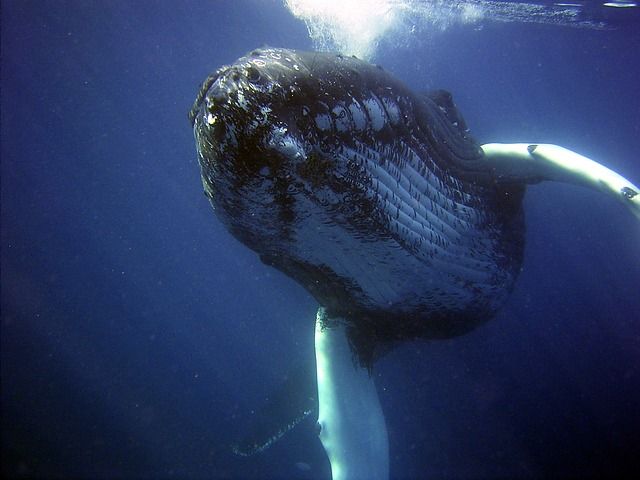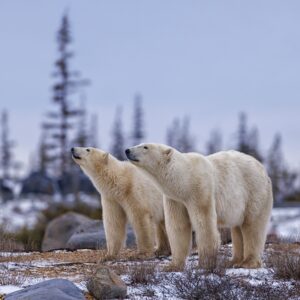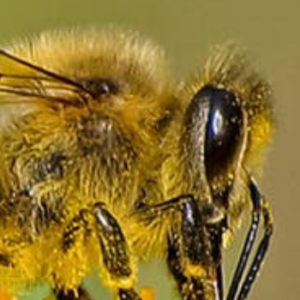Listen in on an underwater musical… starring whales!
Whales are social animals. Just like humans, they communicate by talking to each other: with clicks, squeaks, moans and murmurs that can help them navigate the ocean and find food.
Just like bats, echolocation means that sound waves are sent out, bounce off objects and reflect back to the individual. This is also how whales navigate, assess their surroundings and forage for food. Underwater echolocation is even more efficient, since sounds travels faster in water than in air.
Toothed VS Baleen
Morphology of teeth and skull structure differ between the two major groups affecting the sounds produced by each. Toothed whales make clicks and squeaks, whereas baleen whales make moans and murmurs. All whales use very low frequencies and scientists need special equipment to analyze the sounds. Take a listen:
Humpback Whale Song
Sperm Whale Clicks
Feeding Communication
A group of whales is called a pod. Whales are social feeders and will come together to forage in busy prey areas. Sound is used to communicate between animals. Humpback Whales, for example, eat krill and small schooling fish. One whale will announce their find to the others and a feeding frenzy will begin. Listen below to hear contact calls: “moos” and “whups” and finally, a feeding cry that translates to: “look guys, I found the jackpot!”
Contact Call: Moo. Courtesy National Park Service.
Contact Call: Whup. Courtesy National Park Service.
Feeding Cry. Courtesy National Park Service.
Different Dialects
Humans aren’t the only ones with dialects! Studies dating back from the late 1960’s started to put the songs and sounds into like-groups and realized there was a pattern to the sets. They’re also regional: songs that are heard in the Pacific are not heard in the Atlantic.
Listen below to hear the songs of the Blue Whales from different oceans. These recordings have been increased by 10x in order for our human ears to hear.
Pacific Blue Whale
Atlantic Blue Whale
Play Time
In the deep blue, whales lurking underwater emit calls to announce their presence, to detect their surroundings and – sometimes – just because they want to!
Whales produce some of the most haunting noises on earth. But if you can get past the eeriness of the sounds, you can appreciate the beauty of the songs.
Humpback Whale Song. Credit Encounters.
Humpback Whale Vocals. Credit National Park Service.
Transient Killer Whale Vocalizations. Credit National Park Service.
Noisy Threats
Activity from cargo ships, cruise ships and fishing boats has increased in our waterways each decade. Together, this means an increase in the noise traffic of the ocean. This can create problems for whales, who have to use more energy producing louder noises and are confused by competing sounds. Fish are also sensitive to noise and vibrations and often run away, increasing the difficulty of a hunt.
Want to help whales?
Whales on the east coast need your help! Over 20 species of marine mammals migrate through the Laurentian Whale Passage every year. Right now, the area is unprotected and at risk from oil and gas.




